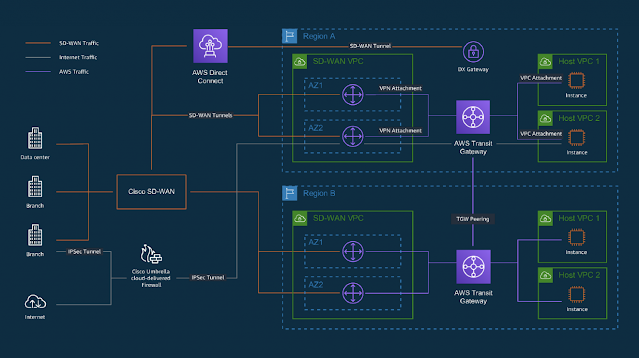According to a Cisco study, by 2021, there will be 20 zettabytes of traffic between the DC/branch to the clouds, as companies use popular public cloud platforms like Amazon Web Services (AWS). Meanwhile, “IaaS is forecast to grow 24% year over year, which is the highest growth rate across all market segments,” according to Gartner.
However, while a cloud strategy creates more agility, it also presents challenges for IaaS deployments. Below are three primary concerns cloud users face regularly:
Inconsistent connectivity
Large-scale networks may traverse multiple slow public and/or expensive private connections to get to the cloud deployments, while smaller networks may need to battle out a slow, jittery internet to get to the clouds. In either case, customers will need to find the fastest and most reliable link while confirming a secure transport.
Complexity with governance
No real uniformity exists as to how different platforms handle their governance and compliance. This maze of rules and frameworks can create consistency problems with companies trying to utilize more than one cloud platform, especially with (but not exclusive to) IaaS. Finally, each cloud vendor has its own policy, security and segmentation process. These variances from vendor to vendor add another layer of complexity that must be managed.
Visibility problems
Different cloud platforms also use various protocols for analytics, metrics and insights. This variance can effectively reduce visibility for companies, making it more challenging to optimize usage across the network.
Cisco’s SD-WAN Cloud OnRamp automates and optimizes the enterprise SD-WAN to IaaS and SaaS
Cloud OnRamp is a cloud networking solution and a functionality of Cisco SD-WAN through which enterprises can network their branch sites to workloads deployed in cloud environments. Cloud OnRamp provides seamless, secure and automated networking for IaaS as well as an optimized experience for various SaaS applications.
One proven way to overcome the challenges of a cloud strategy is by implementing a consistent fabric across a company’s entire WAN network using Cisco SD-WAN Cloud OnRamp. Cisco SD-WAN provides a secure WAN architecture that can extend consistent policy enforcement, segmentation and security across both on-premises and cloud networks. Cloud OnRamp simplifies the experience further through the power of automation, using vManage as the single pane of glass management platform to create a SD-WAN transit network in the cloud provider’s environment.
Advantages of Cisco SD-WAN Cloud OnRamp
◉ Greater automation — With Cloud OnRamp, users can expect to automate SD-WAN extension to the cloud in minutes with just a few clicks.
◉ Improved security – Cloud OnRamp reduces security risks by leveraging graular segmentation and streamlined policy enforcement that can control and segment the traffic that flows through the network, guarding against external and internal threats to the data.
◉ Ease of management – Cloud OnRamp provides end-to-end data sharing between cloud and branch and establishes inter-regional visibility across transit data and network telemetry.
Cisco SD-WAN Cloud OnRamp Integration with AWS Transit Gateway
Cisco has partnered with AWS to provide end-to-end solutions for joint customers to create the best possible user experience. Customers benefit from fully automated networking to workloads in AWS Cloud and native integration between Cisco SD-WAN and AWS Transit Gateway and Transit Gateway Network Manager.






0 comments:
Post a Comment